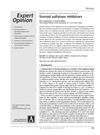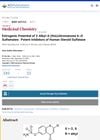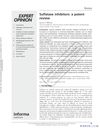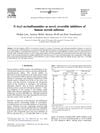2-Substituted 4-(Thio)chromenone 6-O-Sulfamates: Potent Inhibitors of Human Steroid Sulfatase
August 2002
in “
Journal of Medicinal Chemistry
”
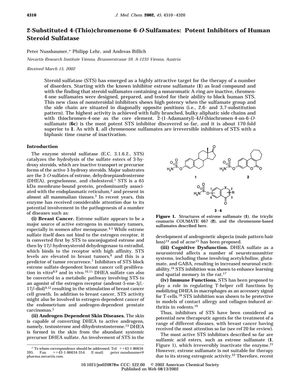
TLDR New compounds were made that block an enzyme linked to breast cancer better than existing treatments.
The document describes the creation and evaluation of a new series of nonsteroidal inhibitors targeting human steroid sulfatase (STS), an enzyme associated with diseases like breast cancer and androgen-dependent skin conditions. The most effective compound identified was 2-(1-adamantyl)-4H-thiochromenone 6-O-sulfamate (6c), which showed an inhibitory potency approximately 170 times greater than the known inhibitor estrone sulfamate. The study found that inhibitors with bulky aliphatic side chains and a thiochromenone core were the most potent, and that an aromatic A-ring is crucial for STS inhibition. These inhibitors were irreversible and acted with a biphasic time course of inactivation. The study also provided detailed synthesis methods and characterized the compounds using NMR spectroscopy data, with the most potent nonaromatic analogue, 3n, showing an IC50 of 5.6 nM, and the thiochromenone analogue, 6c, with an IC50 of 0.34 nM. The findings contribute to understanding the structure-activity relationships of STS inhibitors and their potential therapeutic applications.
